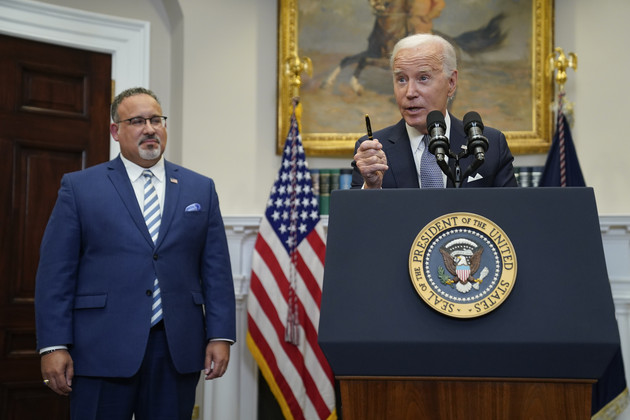
The Biden administration has revealed an extensive expansion of its student debt cancellation plans, aiming to automatically relieve debt for Americans facing financial hardship. The draft proposal empowers the Education Department to discharge loans for borrowers likely to default, utilizing factors like household income, total debt balance, repayment history, and Pell grant receipt. This move comes as President Joe Biden seeks to address the student loan crisis as part of his election platform.
Key Points:
- Automatic Debt Cancellation: The draft proposal outlines a one-time debt relief program that would automatically cancel student debt for borrowers considered at least 80% likely to default within the next two years. This broad approach aims to address financial hardship among a significant number of borrowers.
- Factors Determining Hardship: Over a dozen factors, including household income, total debt balance, loan repayment history, and Pell grant receipt, will be considered to determine financial hardship. However, specific thresholds for these factors are not defined in the proposal.
- Public Hearing and Rulemaking: The proposal will be subject to public debate during a federal rulemaking panel’s public hearing next week. The Education Department plans to release the proposal for public comment in May, indicating a commitment to transparency and public input.
- Legal Considerations: The draft acknowledges potential legal challenges and justifies debt cancellation in cases where borrowers are experiencing hardship and unlikely to repay, stating that the costs of enforcing the full debt amount are not justified by the expected benefits of continued collection.
- Biden’s Plan B Strategy: This move is part of President Biden’s alternative strategy after the Supreme Court struck down his initial attempt to cancel up to $400 billion of outstanding debt. The administration aims to be expansive within legal limits, emphasizing a forward-looking approach.
- Pressure from Democrats and Activists: The administration faced pressure from Congressional Democrats and student debt activists, leading to this comprehensive proposal. It addresses concerns that the previous public hearings did not include a broad category for borrowers experiencing financial hardship.
While the draft proposal is positioned as broad and forward-looking, specific data on the number of borrowers to be covered is not disclosed. The administration acknowledges that legal challenges may follow this latest debt relief program.
COMMENTS